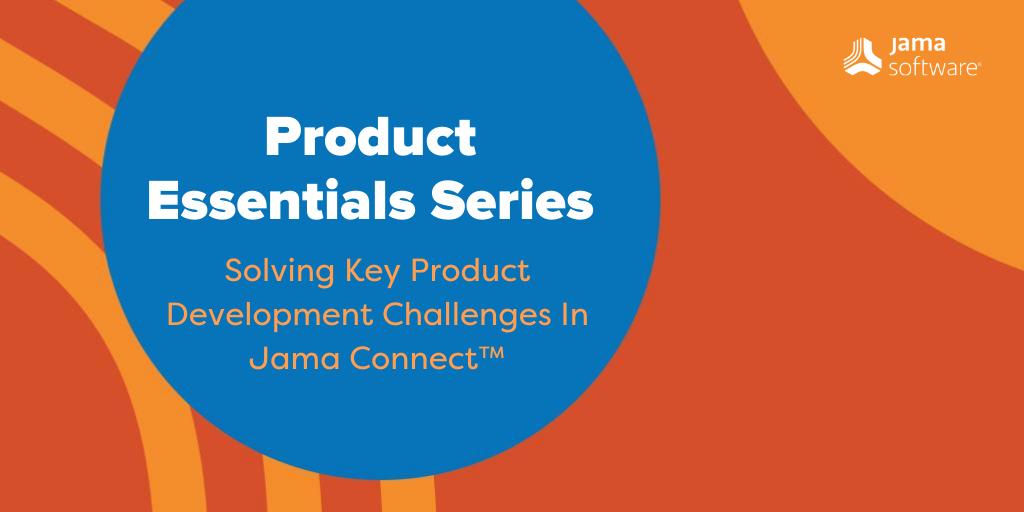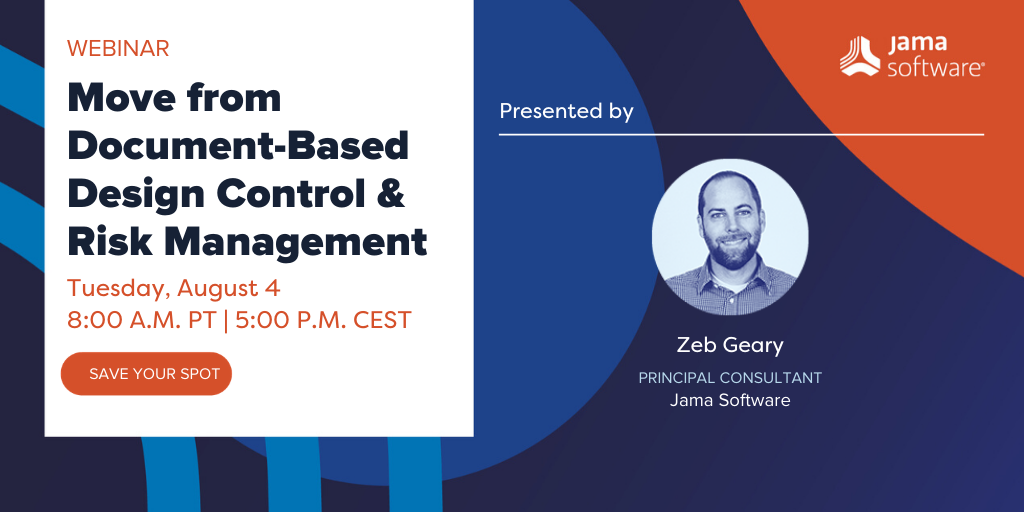 With over 12.5 million active users, organizations around the globe rely on Jama Connect to help bring complex products to life. Innovative companies choose Jama Connect to improve quality, reduce rework, prove compliance, and get to market faster.
With over 12.5 million active users, organizations around the globe rely on Jama Connect to help bring complex products to life. Innovative companies choose Jama Connect to improve quality, reduce rework, prove compliance, and get to market faster.
That’s why we’re excited to announce a six-part series of deminars (yes, you read that right – it’s a demonstration webinar!) where we’ll be giving you an inside look at the leading platform for requirements, risk, and test management. In this deminar series, we’ll cover key features and capabilities, seamless integrations, best practices, and more.
Below is a snapshot of when each deminar will happen, what will be covered, and how you can save your spot.
Product Essentials: A Quick Tour of Jama Connect for Modern Requirements Management
Thursday, September 10 – 8:00 a.m. PT | 17:00 CEST
Jama Connect enables consistency, collaboration, and alignment across the enterprise by providing a continuous flow of accurate requirements information. This webinar demonstration tour provides an overview of the Jama Connect platform.
In this demonstration session, you’ll learn how to:
-
- Establish alignment across people, process, and technology to establish a single source of truth around digital requirements management
- Collaborate across both internal and external teams using Review Center
- Use traceability views to provide visibility across the entire product development cycle
- Utilize our common integrations to extend the solution capabilities — including JIRA
- Use Jama Connect to support testing, change management and impact analysis
Product Essentials: How to Streamline Reviews and Collaborate with Remote Teams, Customers, and Suppliers with Jama Connect.
Thursday, September 24 – 8:00 a.m. PT | 17:00 CEST
Through structured collaboration in Jama connect, teams can source feedback from distributed teams and collect side-conversations in an actionable way to gain cross-team visibility.
In this demonstration session, you’ll learn how to:
- Easily establish communication and document decisions across virtual teams
- Immediately notify and prioritize critical decisions and pull in required contributors throughout the development process
- Hold formal reviews and document those decisions in Review Center
- Exchange requirements with remote teams, customers, and suppliers to extend the development process beyond your core team
Product Essentials: Unpacking Requirements Traceability Capabilities of Jama Connect
Thursday, October 8 – 8:00 a.m. PT | 17:00 CEST
In this session you’ll learn how Jama Connect capabilities provide requirements traceability which improves product development accuracy and/or quality and ensures the ability to provide trace reports for audits. Learn how various options are used to track relationships to/from/between requirements and understand the full impact across the project.
In this demonstration session, you’ll learn how to:
- Create relationship guardrails to ensure traceability rules will guide users and prevent dependency chaos
- Right click to build relationship dependencies as you perform everyday work activities
- Use trace view to:
- Identify relationship dependencies between data
- Track progress and identify missing work items
- Analyze potential impact of changes
- Gain visibility needed for prioritizing lower level work items against higher level requirements
- Use item widgets to:
- View impact analysis to understand the potential impact of change
- Initiate conversations between connected users
- Export relationship dependencies to support compliance audits
Product Essentials: Using Jama Connect and JIRA to Manage Requirements for Software Development Teams
Thursday, October 22 – 8:00 a.m. PT | 17:00 CEST
In this session you’ll learn how Jama Connect provides the ability to link JIRA tasks and defects to requirements for full transparency, traceability, and change management throughout the software development process. Product and engineering teams can connect product planning to execution and stay in sync to ensure accuracy and quality of work.
In this demonstration session, you’ll learn how:
- Link issues and defects from JIRA to Jama Connect
- Support conversations across the team between the requirements and epics throughout the software development process
- Analyze—at a dashboard level—the state of the tests, stories, and epics related to a project
- Use the two-way integration between Jama and JIRA to allow the flow of information back and forth across the teams with synchronization, providing a single source repository and full traceability
Product Essentials: Sharing How Jama Connect Allows for Earlier Testing in the Lifecycle to Increase Quality and Efficiency.
Thursday, November 5 – 8:00 a.m. PT | 17:00 CET
Through testing in Jama connect, teams can achieve value by incorporating the results of the test strategy into the product strategy and identify potential defects earlier in the product development lifecycle, which prevents late stage changes leading to costly rework. Learn how Jama Connect provides full manual testing capabilities tied into the product development process ensuring that you release a best-quality product that meets customer expectations.
In this demonstration session, you’ll learn how to:
- Create a test case and configure filters to quickly access requirements that have no test coverage
- View test cases, the tests associated, and test run results to analyze test coverage and easily view any gaps
- Log defects from the testing interface and view automatic trace relationships
- Export reports to support compliance activities
Product Essentials: Working with baselines in Jama Connect to Facilitate Compliance and Reuse in Product Development.
Thursday, November 19 – 8:00 a.m. PT | 17:00 CET
Learn how to view and create a baseline to capture and preserve the project at a single point in time. This supports compliance and enables reuse in product development projects.
In this demonstration session, you’ll learn how to:
- Coordinate product releases across teams and projects
- Easily create a baseline release and track it effectively throughout the development of the product
- Navigate the workflow across teams to support release schedules
- Use baselines to fulfill regulatory requirements (with respect to record keeping) by producing a clear and readable audit trail.
 Medical device companies are on the cutting-edge of advancing health care. Along with facing relentless pressures to innovate and release quality products, they also must comply with regulations and standards to remain competitive.
Medical device companies are on the cutting-edge of advancing health care. Along with facing relentless pressures to innovate and release quality products, they also must comply with regulations and standards to remain competitive.
